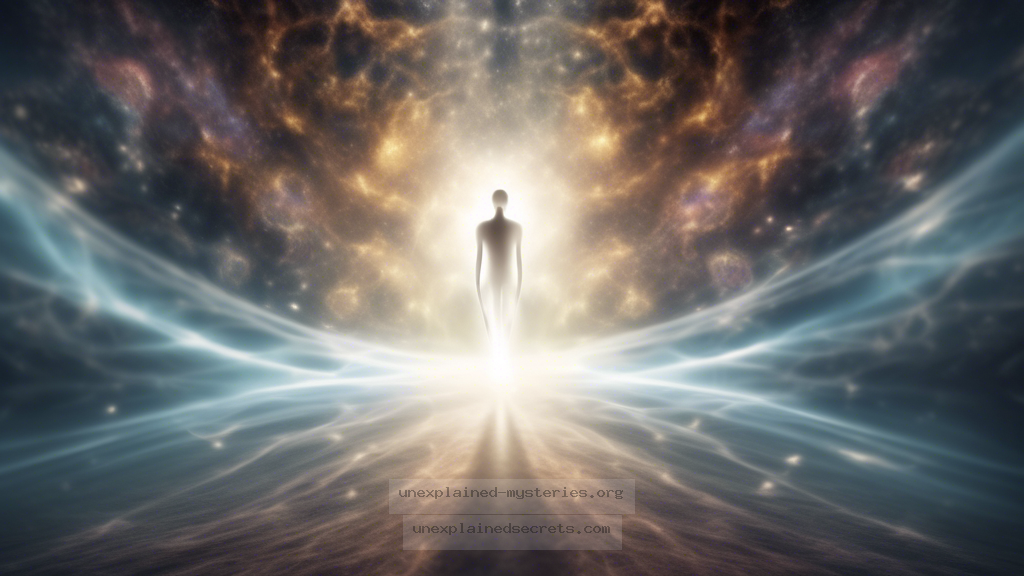What Do Near-Death Experiences Reveal About Consciousness After Clinical Death?
What Do Near-Death Experiences Reveal About Consciousness After Clinical Death?
The phenomenon of Near-Death Experiences (NDEs) has intrigued scientists, philosophers, and spiritual seekers alike for decades. What happens to consciousness when the body is clinically dead? Are these experiences mere hallucinations, or do they provide a glimpse into a realm beyond our physical existence? Understanding NDEs is not merely an academic exercise; it has profound implications for how we understand life, death, and the nature of consciousness itself. This question matters because it challenges our fundamental beliefs about mortality and the afterlife, urging us to explore the boundaries of human experience and the essence of existence.
Historical Context of Near-Death Experiences
The concept of NDEs is not a modern phenomenon; throughout history, cultures around the world have recounted tales of individuals who have had encounters beyond life. Ancient texts, such as those from the Tibetan Book of the Dead, describe experiences that parallel modern NDE reports. In the 19th century, accounts began to emerge in medical literature, often attributed to patients who had been pronounced dead or clinically dying. These accounts described sensations such as floating above one’s body, moving through a tunnel, or encountering deceased loved ones.
In the late 20th century, Dr. Raymond Moody popularized the term “Near-Death Experience” in his groundbreaking book, “Life After Life,” published in 1975. Moody’s work compiled numerous accounts from individuals who claimed to have experienced NDEs, highlighting common themes such as feelings of peace, detachment from the body, and encounters with bright lights or beings of light. His research opened the door to further scientific inquiry into the relationship between consciousness and death.
Core Concepts of Near-Death Experiences
NDEs typically encompass several key elements that have been consistently reported across cultures and time periods. These include:
- Out-of-Body Experience (OBE): The sensation of floating above one’s physical body and observing events from a distance.
- Tunnel Experience: Moving through a dark tunnel toward a bright light.
- Life Review: Experiencing a rapid review of one’s life events, often accompanied by feelings of love and compassion.
- Encountering Beings of Light: Meeting spiritual beings or deceased loved ones who convey messages of love and acceptance.
- Return to the Body: A feeling of being pulled back into the physical body, often accompanied by reluctance.
These elements suggest a structured experience that transcends cultural differences, prompting researchers to explore deeper questions about the nature of consciousness. Are these experiences merely brain activity in the face of death, or do they indicate the existence of a consciousness that persists beyond physical demise?
Scientific Research and Evidence
Over the past few decades, scientific research into NDEs has intensified, focusing on the physiological and psychological factors that might explain these experiences. A prominent study conducted by Dr. Sam Parnia, a critical care physician, involved patients who had suffered cardiac arrest. The research aimed to determine whether patients could recall specific details about their resuscitation and the events surrounding their clinical death.
Parnia’s findings revealed that a significant percentage of patients were able to provide accurate accounts of conversations and events that occurred during their cardiac arrest, despite being clinically dead at the time. This suggests that consciousness may continue to function in some capacity even when the brain is not actively working. However, skeptics argue that these experiences can be attributed to brain activity, oxygen deprivation, or chemical reactions occurring during near-death states.
Practical Implications of NDE Accounts
The implications of NDEs extend beyond the individual experiences; they influence how we approach death, dying, and the grieving process. Many individuals who have had NDEs report a profound transformation in their perspective on life. They often describe diminished fear of death, increased appreciation for life, and a newfound sense of purpose.
Clinicians and therapists are increasingly acknowledging the impact of NDEs on patients’ mental health and well-being. Understanding the emotional and psychological aspects of these experiences can help healthcare providers offer better support to patients facing terminal illness or severe trauma. Additionally, the insights gained from NDEs can inform discussions about end-of-life care, assisting families in navigating the complexities of mortality.
Alternative Perspectives on NDEs
While many view NDEs as evidence of an afterlife or continued consciousness, alternative explanations exist. Some researchers suggest that NDEs may result from neurochemical processes occurring in the brain during extreme stress or trauma. For example, the release of endorphins or neurotransmitters like serotonin could create sensations of peace, euphoria, or detachment. Additionally, the brain’s response to hypoxia (lack of oxygen) may lead to visual and auditory hallucinations that mimic the experiences described in NDEs.
Cultural and psychological factors also play a significant role in shaping NDEs. Individuals’ beliefs, previous experiences, and cultural backgrounds can influence how they interpret their experiences during near-death moments. For instance, a person raised in a religious environment may interpret an encounter with a being of light as a divine presence, while someone with a secular background might perceive it differently.
Common Misconceptions about NDEs
As interest in NDEs continues to grow, so too do misconceptions surrounding the phenomenon. Here are some common myths and their clarifications:
- Myth: NDEs are just hallucinations caused by brain activity during clinical death.
Clarification: While brain activity can influence perceptions, many NDE accounts include details that patients could not have known, suggesting a form of awareness beyond typical brain function. - Myth: All NDEs are positive and life-affirming.
Clarification: Some individuals report distressing or negative experiences during NDEs, often referred to as “hellish” NDEs, which can lead to significant psychological impacts. - Myth: NDEs are exclusive to those who are dying.
Clarification: NDEs can occur in various situations, including during traumatic events, surgeries, or severe illness, not solely during moments of impending death.
Best Practices for Investigating NDEs
For those interested in exploring NDEs further, whether from a scientific, spiritual, or philosophical perspective, several best practices can be adopted:
- Engage with First-Person Accounts: Listening to or reading detailed accounts of NDEs can provide insight into the personal dimensions of these experiences.
- Participate in Research Initiatives: Collaborating with researchers or organizations studying NDEs can deepen understanding and contribute to the growing body of knowledge.
- Explore Cross-Disciplinary Perspectives: Consider viewpoints from neuroscience, psychology, philosophy, and spirituality to gain a holistic understanding of NDEs.
- Encourage Open Dialogue: Promote discussions about NDEs in various communities to reduce stigma and foster understanding.
Future Developments in NDE Research
The exploration of NDEs is far from complete. As technology advances, researchers are increasingly able to investigate the phenomena associated with NDEs using brain imaging and other scientific tools. The future may hold groundbreaking discoveries regarding the nature of consciousness, the brain’s capabilities, and the mysteries of life and death.
Moreover, the intersection of spirituality and science continues to evolve, with more scholars and scientists recognizing the importance of exploring subjective experiences. There is a growing acknowledgment that understanding consciousness may require a more integrative approach that combines empirical research with philosophical inquiry.
Conclusion: The Continuing Mystery of Consciousness
Near-Death Experiences raise profound questions about the nature of consciousness and what lies beyond death. As we continue to investigate these occurrences, we may uncover insights that could reshape our understanding of life itself. Whether viewed through a scientific lens or a spiritual one, NDEs challenge us to reconsider our beliefs about mortality, existence, and the potential for consciousness beyond the physical world. The mystery of what happens after clinical death is an invitation to explore the depths of human experience, urging us to embrace the unknown with curiosity and openness.
Other Articles
Recent Posts
- What Happened to Flight MH370? The Conspiracy Theories That Still Haunt Us
- What Secrets Lurk Within the Walls of the Infamous Trans-Allegheny Lunatic Asylum?
- What Evidence Supports the Existence of Bigfoot in the Pacific Northwest?
- What Happened to the Indus Valley Civilization? Unraveling the Mysteries of Ancient Urban Life
- Can Telepathy Be Scientifically Proven Through Laboratory Evidence?







